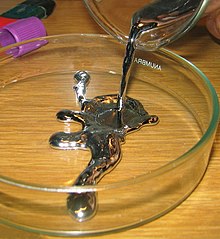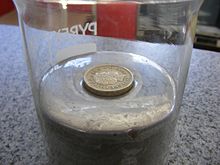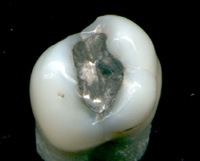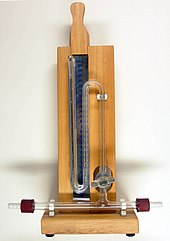A chemical oscillator is a complex mixture of reacting chemical compounds in which the concentration of one or more components exhibits periodic changes, They are a class of reactions that serve as an example of non-equilibrium thermodynamics with far-from-equilibrium behavior. The reactions are theoretically important in that they show that chemical reactions do not have to be dominated by equilibrium thermodynamic behavior.
In cases where one of the reagents has a visible color, periodic color changes can be observed. Examples of oscillating reactions are the Belousov–Zhabotinsky reaction (BZ), the Briggs–Rauscher reaction, and the Bray–Liebhafsky reaction.
https://en.wikipedia.org/wiki/Chemical_oscillator
The mercury beating heart is an electrochemical redox reaction between the elements mercury, iron and chromium. The reaction causes a blob of mercury in water to oscillate.
The observeable reaction demonstrates an effect of a non-homogeneous electrical double layer.[1][2] It is often used as a classroom demonstration.
https://en.wikipedia.org/wiki/Mercury_beating_heart

https://en.wikipedia.org/wiki/Mercury_(planet)
 | ||||||
| Mercury | ||||||
|---|---|---|---|---|---|---|
| Appearance | shiny, silvery liquid | |||||
| Standard atomic weight Ar, std(Hg) | 200.592(3)[1] | |||||
| Mercury in the periodic table | ||||||
| ||||||
| Atomic number (Z) | 80 | |||||

https://en.wikipedia.org/wiki/Mercury_(element)









No comments:
Post a Comment